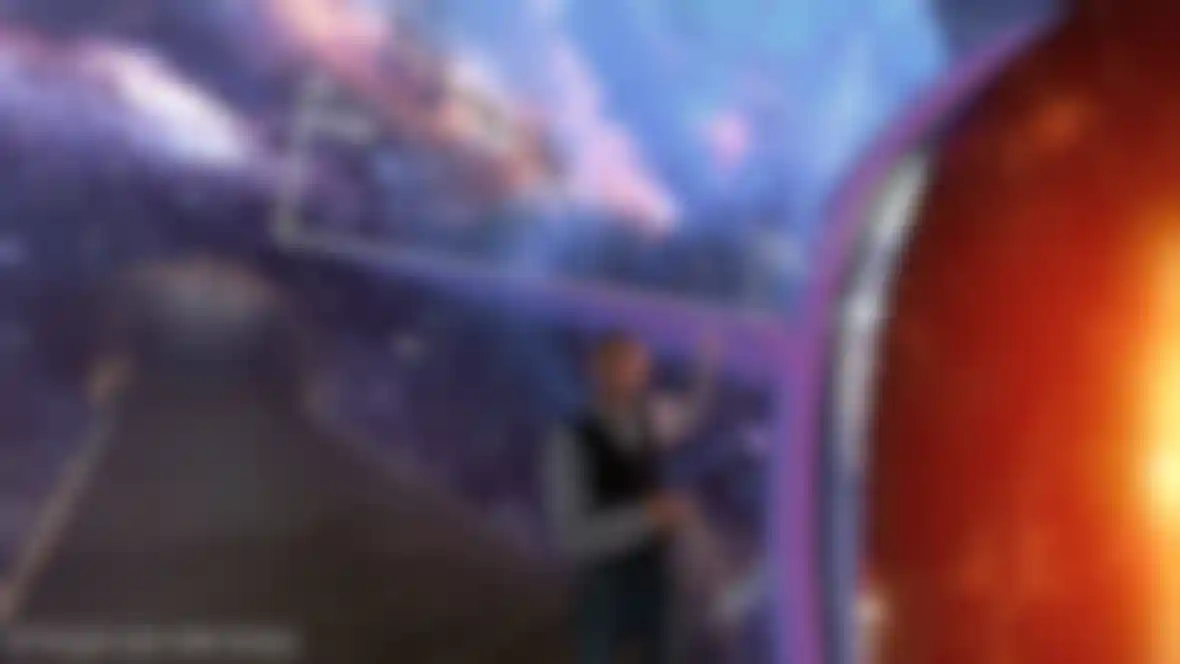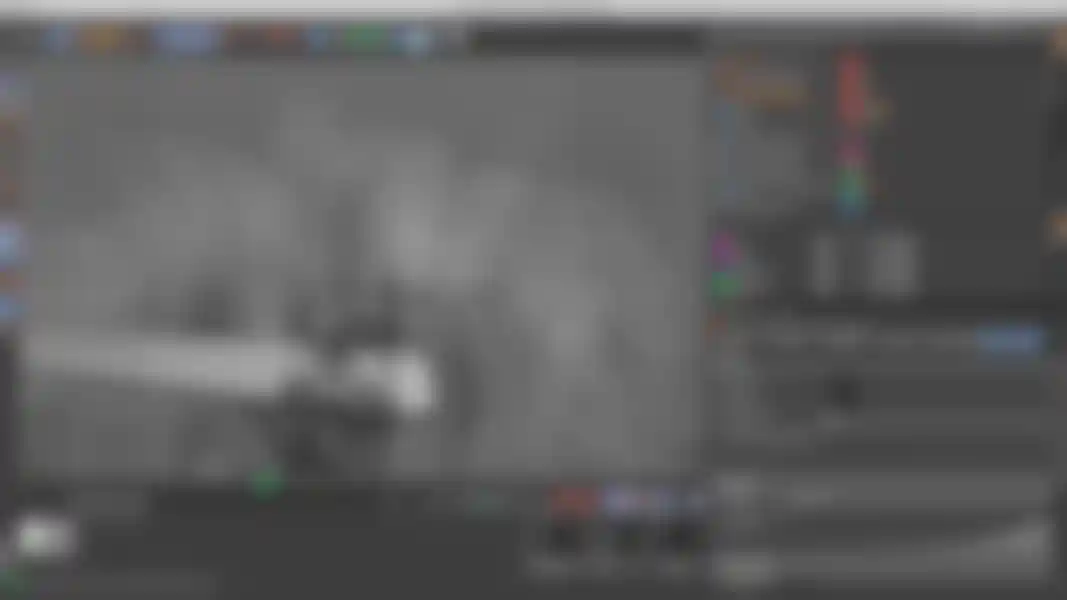
A Curious Mind How CreamVR, Thought Café and Torus Media created a series that uses 360° VR to explore the universe.
As the host of Hulu’s A Curious Mind, Dominic Monaghan (Lord of the Rings, Lost) leads the way as viewers travel though outer space and explore intriguing questions about the universe and science. Inspired by Carl Sagan’s Cosmos, the series’ content is captivating all on its own. But the fact that it gives viewers an immersive 360° VR experience puts it in another realm altogether.
Toronto-based CreamVR masterminded A Curious Mind after talking with Hulu about creating content for Microsoft’s MR headset launch. Because everything except Monaghan would be CGI, CreamVR brought on animation and VFX studio Thought Café to lead creation of the show’s 360° environment using a variety of tools, including Maxon’s Cinema 4D, After Effects, Canvas 360 and CV-VRCam, which enables Cinema 4D to render in 360 degrees using the standard renderer.
Direction for the project was fairly open-ended but CreamVR made it clear that they wanted something extraordinary, something that allowed viewers to really feel like they were inside the adventures unfolding on-screen. Thought Café was up for the challenge but problems arose when the team tried to render some of the stereoscopic footage out of Cinema 4D.
Here, Thought Café’s Creative Director Jon Corbiere and Technical Director Tyler Sammy, as well as Aden Bahadori, CEO of Torus Media Labs, explain how the team created the breathtaking series and solved their technical problems with a little help from developers at Maxon.
Why did CreamVR choose Thought Café, and have you worked with them in the past?
Corbiere: Thought Café is a design, animation and digital effects studio and we focus almost entirely on factual content for education, documentaries or cause-related projects. Over the last few years, our collective of artists, animators, illustrators and producers has been exploring VR work because a lot of industries are trying to figure out how VR fits for them. Virtual Reality is a natural fit for educational content, so we’ve been doing pieces here and there. We’ve worked with some of the creatives from CreamVR and they reached out to see if we wanted to work with them on this project.
I imagine Canvas 360 has been a part of CreamVR’s process in the past too, right?
Bahadori: Yes, we have a long relationship with Andrew MacDonald, one of Cream’s creative directors. They contacted us early on because they know stereoscopic camera tracking can be difficult. People talk about how 360° video is a confusing format, and it can be. That’s why Mike Sevigny and I founded Torus Media Labs and started out by making tools for ourselves. There were no tools available to do camera tracking in 360 degrees, so we made Canvas 360 and then made it available for others to use.
Talk about how you worked together to create the show’s immersive feel.
Corbiere: From the start, we decided to make this series different from what’s out there. Instead of static shots, we wanted lots of moving cameras and crane shots. We didn’t want the host to just stand in front of a static 360 camera where it felt like nothing was in his environment. Anyone can take a locked-off shot and put a character in another background. With a moving camera, what you’re seeing feels more authentic. Most action sequences are shot with a hand-held camera, so we wanted to shoot Dominic with a hand-held camera on a crane, like a Steadycam shot. We also shot from various angles and distances so he would be framed well with the graphics around him.
Sammy: We are consumers of VR content, so we have been making ourselves sick watching it from the early days. Every time we think, ‘This is really good man, but why does the execution have to be so terrible?’ We wanted to make this a mind-blowing experience that wouldn’t make people sick. In our first discussions with Cream, we decided to really push things technically and do something that hadn’t been done in 3D space and 360. We were planning on using a techno dolly so we could have the actual data from the camera. But due to hardware availability and talent scheduling that didn’t work out, so Andrew suggested we contact Torus Media Labs.
Talk a bit about Canvas 360 and how it was used for this project.
Bahadori: We know that Canvas 360 can move scene data from After Effects to Cinema 4D. But things got tricky when we introduced the stereoscopic aspect. Canvas 360 was not designed for a stereoscopic workflow but Mike Sevigny, our co-founder, was already developing S3D360 tools internally at Torus Media Labs. The difficult task, at that time, was to match the stereoscopic rectilinear camera motion seamlessly with the stereoscopic 360 renders. Since then, our stereoscopic tools, Canvas STK, have been released.


You mentioned that the camera tilt caused some complexities. Say more about that.
Sammy: Early on in the testing phase, Thought Cafe identified a bug in CV-VRCam that was preventing them from rendering the scenes with accurate camera tracking data. The problem was that scenes didn’t render properly if the camera was tilted, and a lot of the footage was shot with the camera intentionally tilted down. We contacted Maxon and they put us in touch with some of their developers working on those plug-ins, so we called and said, ‘Hey, we have this crazy project and literally everyone says we’re crazy trying to do this.’ It was great because they understood what we needed and let us use an early beta of CV-VRCam to render the tilted footage. This isn’t a problem anymore since Cinema 4D R19.
Did this project inspire Torus Media to develop different products?
Bahadori: The R&D on this project is what solidified the foundation for our new stereoscopic tools, Canvas STK. One of the major features that sets it apart is that Canvas STK allows you to preview in several different formats, including those supported by 3D Monitors and 3D TVs. This means you can point the camera in any direction and preview the stereoscopic image on a real 3D medium without having to put on and take off the HDM while trying to position elements.
What is Thought Café working on now?
Sammy: We continue to regularly produce traditional and interactive digital content for the web, broadcast, and feature films while also developing new projects in the VR, AR and XR (cross reality) space. Recently, we built on some of what we learned working on A Curious Mind to create two new stereoscopic 360 experiences that combine live action and computer graphics to deliver unique educational experiences.
Credits
Mike Sevigny, Technical Director / Stereoscopic Tracker
Animation & VFX by Thought Cafè









